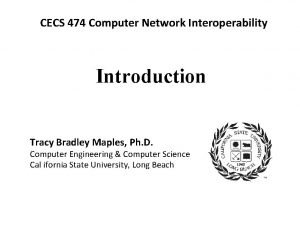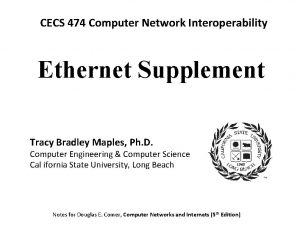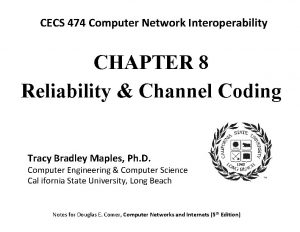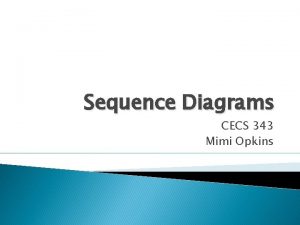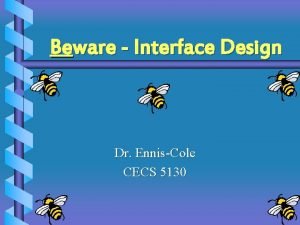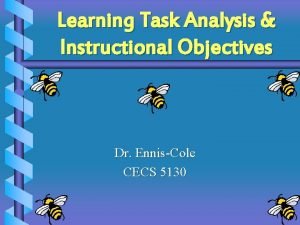Modes of CAI Dr EnnisCole CECS 5020 Designing













- Slides: 13

Modes of CAI Dr. Ennis-Cole CECS 5020

Designing Lesson Sequences 1. Fixed Lesson Sequences 2. Avoid Unnecessary Information 3. Review Past Information

Creating Instructional Sequences Tutorials Drill & Practice Instructional Games Simulations Hybrid Designs

Modes and Designs of CAI b Tutorials • • Present New information, skills, or concepts Self-Contained Verification and Reinforcement Well-Defined Objectives Appropriate Feedback Direct Students, Guide Responses Expectations Stated Early

Advantages of Tutorials Factual Information, Simple Discriminations, Rules, Applications of Rules, Learners Pace Themselves

Limitations of Tutorials b 1. Design Time b 2. Difficulty Teaching High-Ordered Skills b 3. Duplication of Instruction b 4. Complexity and Practicality

Drill & Practice Advantages b Practice well-defined Skills b Offer Immediate Feedback b Avoid Unchecked Error Responses b Clear Directions b Assume Basic Information was Taught Elsewhere b Minimize Unrelated Narrative and Procedural complexity

Limitations of Drill & Practice b 1. Electronic Flash Cards, Responses only b 2. Process Remains Uncovered b 3. Limited Potential b 4. Additional Student Guidance

Advantages of Simulations b 1. Alternative Teaching Systems b 2. Cause-and-Effect Relationships can be Studied, Thinking, Evaluation b 3. Eliminate Danger, difficulty b 4. Scenarios, High-fidelity images, Believable Circumstances b 5. Emphasis on Processes, Procedures

Disadvantages of Simulations b. Problem Sophistication b. Cost Issues b. Lesson Design

Instructional Games b Advantages: • Competition, Develop, Reinforce, and refine aspects of learning • Well understood, Provides explicit guidelines and participatory rules • Attractive and motivational

Instructional Games b Disadvantages: • Entertainment Value • Incongruent Reward Structure for Incorrect Answers • Minimal Incidental Learning • Excessive Use of Computing Power

The End b “That’s all folks. . . ”




